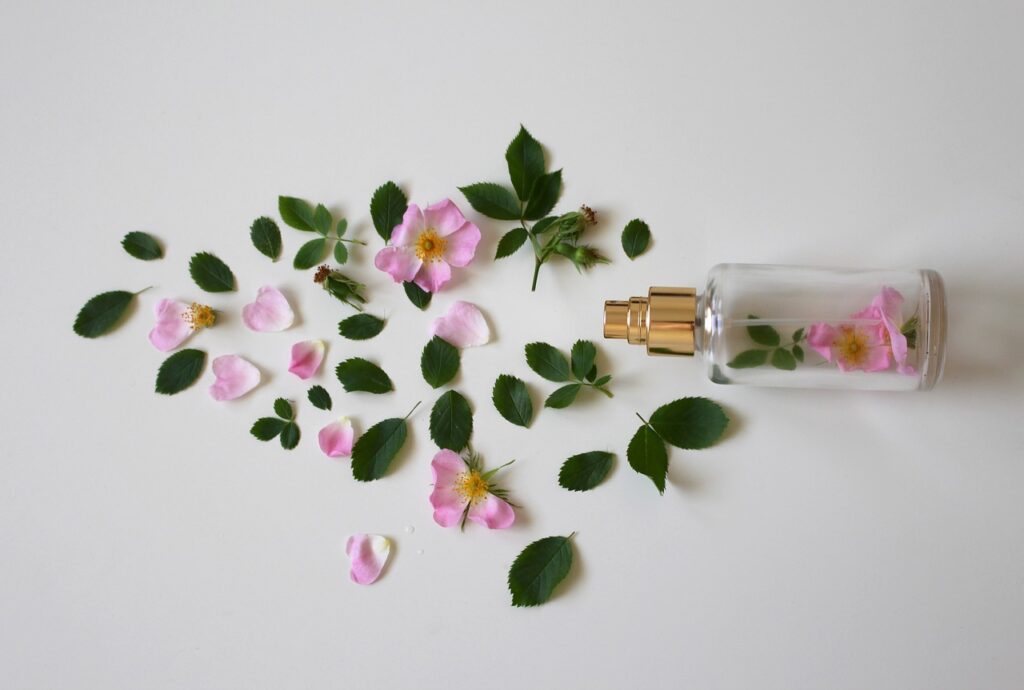Perfumes are part of human history for a very long time. Evidence has shown that since the times of Egyptian civilization, perfume has played a vital role in the humans’ lifestyle.
Deemed as a luxurious possession by many Kings in the past, flaunting by privileged people to showcase their rich lives and used in many therapies for relaxation of mind, Perfumes will always be considered as ‘something special’.
What are Natural Perfumes?
Natural Perfumes can be defined as a product made from several raw materials, used to produce a pleasant smell by spreading its molecules in the air. The raw materials used for making it can be flowers, herbs, spices, barks or sometimes animals. Usually, many different materials are mixed for a single perfume.
Since they are derived from botanical sources, their fragrance is completely pure & natural and smells light and refreshing for our olfactory senses. On the other side, Commercially produced scents are more toxic and stronger in smell.
How are Natural Perfumes Made?
In natural perfumeries, these ‘special scents’ are made by mixing up various organic fragrances and essential oils, with a fixative or solvent. Essential oils are extracted from different natural sources to provide their fragrance, whereas fixatives are used to make the scent last longer.
Raw Essential Oils are highly concentrated and are recommended not to be applied directly. Thus, they are diluted to a certain extent. The process to obtain them from their sources is usually through Steam distillation, Expression or Solvent extraction method.
Since they are very volatile, fixatives are added to provide longevity and making it linger more in the atmosphere.
The process of making them is very challenging and thus are more costly and not easy to find in our world.
In India, these natural perfumes are called ‘Attars’, manufactured using the same age-old technique devised 400 years ago using traditional equipment.
Notes of Perfume Scent
Different essential oils are used in the composition of natural perfumes, which are constructed based on ‘notes’ used to prepare it. Commonly 3 notes are defined- Top, Middle, and Bottom. They are differentiated on their volatility rates, meaning how much time they take to evaporate.
The formulation of any natural scent is based on these three notes used in making it.
- Top Note (Head)- They have high volatility and get evaporated usually in the first 30-40 minutes. These are very strong and sharp in their aroma but also refreshing in nature. They make up 10-30% of the blend.
- Middle Note (Heart)- Less volatile then top note, their odor is observed after the top note is evaporated. This one describes the primary theme/aroma of the perfume. 40-50% of the blend is made up of this note.
- Bottom Note (Base)- Least volatile out of three, this one is evaporated slower than others. These have a deep scent and stay active for more than a day. 15-30% of perfume comprises this note.
A blend is then composed by fusing different essential oils, each having a unique essence, by an expert to maintain a balance of all notes, resulting in the beautiful scent which is loved by many. These blends are then diluted to reduce their intensity. Sometimes they are also left for aging, giving them some time for a perfect blending of all the ingredients.
Also, these natural perfumes should not be exposed to heat, oxygen or light. This would either make them evaporate fast or result in a chemical reaction that will change the perfume’s personality. It is best to keep them in dark and in a cooler condition of about 5-10 degrees Celsius.
It is always better for humans to be close to nature. Natural perfumes are not only pure & non-toxic but also are eco-friendly and cruelty-free. They have many stress-busting and mental relaxation properties as well. In a time when life is getting busier, these perfumes will be our best gift by mother nature.

